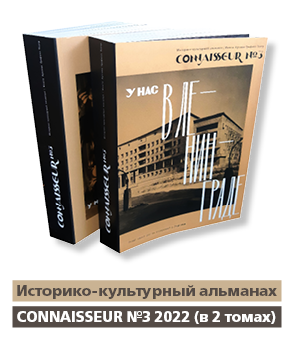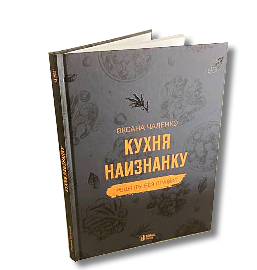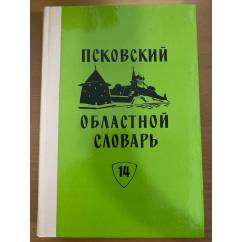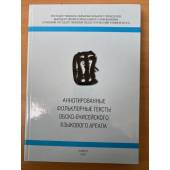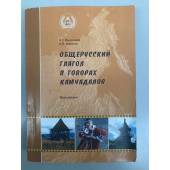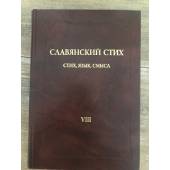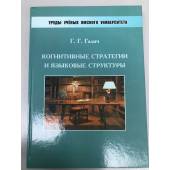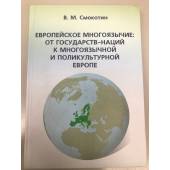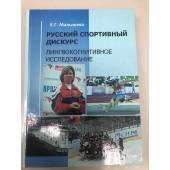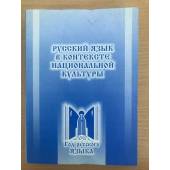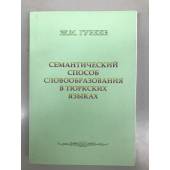
Cart
0
Product
Products
(empty)
No products
Free shipping!
Shipping
0,00 €
Packing fee
0,00 €
Total
Product successfully added to your shopping cart
Quantity
There are %d items in your cart. There is 1 item in your cart.

Categories
- Albums (2076)
- Antique (before 1850) old books (before 1941) (582)
- Art and culture (5319)
- Audiobooks, compact discs (CD) (119)
- Autographed books (244)
- Board games (19)
- Books for school (4704)
-
Books in foreign languages
(8400)
- Books in Altai (4)
- Books in Azerbaijani (47)
- Books in Belarusian (46)
- Books in Bulgarian (2)
- Books in Dutch (2)
- Books in English (6565)
- Books in Estonian (10)
- Books in Finnish (7)
- Books in French (43)
- Books in Georgian (37)
- Books in Greek (2)
- Books in Hungarian (6)
- Books in Italian (12)
- Books in Japanese (7)
- Books in Karelian (3)
- Books in Kyrgyz language (6)
- Books in Latvian (46)
- Books in Lithuanian (7)
- Books in Norwegian (4)
- Books in Polish (14)
- Books in Portuguese (2)
- Books in Slovak (2)
- Books in Spanish (17)
- Books in Swedish (3)
- Books in Tajik (34)
- Books in the Adyghe language (3)
- Books in the Balkar language (8)
- Books in the Bashkir language (73)
- Books in the Buryat language (5)
- Books in the Kalmyk language (7)
- Books in the Karachai language (1)
- Books in the Komi language (5)
- Books in the languages of the peoples of the Caucasus (7)
- Books in the Mari language (17)
- Books in the Mokshan language (1)
- Books in the Mordovian language (3)
- Books in the Nogai language (1)
- Books in the Tatar language (101)
- Books in the Udmurt language (10)
- Books in the Yakut (Sakha) language (27)
- Books in the Yarzyan language (2)
- Books in Ukrainian (982)
- Books in Uzbek (9)
- Chuvash language books (29)
- Kazakh language books (8)
- Business. Economy (1624)
- Calendars (41)
-
Children's Literature
(10296)
- Books for parents (355)
-
Children's creativity and leisure
(893)
- Children's games. Experiments and experiments (15)
- Coloring pages (12)
- Crafts, cooking for children (6)
- Drawing for children (11)
- Make with your own hands (29)
- Modeling, application (7)
- Organization of children's parties (2)
- Origami, paper craft (5)
- Puzzles, crosswords for kids (7)
- Questionnaires, diaries, albums (1)
-
Educational and educational literature for children
(1716)
- Attention. Imagination. Memory (26)
- Basic security (4)
- Creative development (45)
- Foreign languages (101)
- General development. Manuals, reference books (82)
- General preparation for school (43)
- Introduction to the outside world (69)
- Logic. Thinking (30)
- Math and counting (42)
- Teaching reading and writing (89)
-
Educational literature for children
(769)
- Biographies for children (37)
- Books for boys (21)
- Books for girls (19)
- Culture, art, religion (48)
- Encyclopedias, reference books and other educational literature for children (180)
- History for children (86)
- Nature and the environment (243)
- Psychology. Etiquette (12)
- Science, technology, transport (54)
-
Fiction for children
(4316)
- Books for kids (111)
- Books on cartoons and films. Comics (81)
- Detectives and adventures for children (192)
- Foreign prose for children (304)
- Myths. Legends. Historical prose for children (66)
- Poetry for children (146)
- Russian prose for children (413)
- Science Fiction, Fantasy and Horror for Kids (116)
- Tales (498)
- Tales and stories about animals (143)
- Soviet children's books (893)
- Toy books (40)
- Collected works. Multivolume editions (3693)
- collection sets (50)
- Comics (53)
- Cookery (1357)
- Dictionaries. Phrasebooks (1318)
- Electronic books (10)
- Encyclopedia (1020)
- Engravings (7)
- Feng Shui (112)
- Fiction (84393)
- German and Germany (35885)
- gramophone records, vinyl (131)
- Guides (2054)
- Healthy lifestyle. Healthy eating. Fitness (1803)
- History (9776)
-
House. Life. Leisure.
(7707)
- Dom. Life (3168)
- Erotic books, books about sex, kamasutra (193)
- Hobby. Leisure (1650)
- Reference Literature (2193)
-
Sport
(952)
- Aerobics. Fitness. Yoga. Dancing (31)
- Board games (155)
- Combat and martial arts (82)
- Extreme sports (12)
- Gymnastics. Light and weightlifting (8)
- Olympic Games (13)
- Other sports (51)
- Physical culture and sport (72)
- Self-defense. Survival (20)
- Sport games (23)
- Tourism (85)
- Water sports (28)
- Winter sports (18)
- Kits (different books) (139)
- Kits (magazines) (60)
-
Magazines and newspapers
(2571)
- Architecture, interior (9)
- Astrology, esotericism (39)
- Bills (233)
- Calendars 2020 (1)
- Calendars 2021 (3)
- Cars, hunting, fishing (14)
- Celebrities, ZhZL (36)
- Children's magazines (11)
- Computer, technology (3)
- Cooking and Recipes (25)
- Crosswords, Scanwords (5)
- Editions with TV program (134)
- Entertainment magazines (7)
- Fashion, style, beauty (17)
- History (112)
- Hobbies, interests (106)
- Home, family, leisure (77)
- House, garden, vegetable garden (36)
- Literature, theatre, music (235)
- Magazines for men (210)
- Magazines for parents (2)
- Magazines for women (110)
- Medicine, health (155)
- Religion (11)
- Russian press abroad (484)
- Science, technology, fantasy (169)
- Sewing, knitting, needlework (8)
- Society, politics (636)
- Special Editions (58)
- Travel, countries (14)
- Maps, atlases (661)
- Military business. Weapons. Special services (4056)
- Miniature books (149)
- Music. Sheet music (1041)
- Postage stamps (92)
- Postcards (191)
- Posters (37)
-
Professional, educational literature
(24718)
-
Applied sciences. Technique
(2522)
- Agriculture. Veterinary medicine (40)
- Architecture (358)
- Chemical industry (104)
- Construction (445)
- Design (136)
- Energy (68)
- Engineering. Instrumentation (184)
- Food industry (19)
- Jewellery (22)
- Life safety (46)
- Light industry (39)
- Metallurgy (28)
- Mining (83)
- Nanotechnologies (5)
- Oil and gas industry (53)
- Other industries (101)
- Polygraphy (8)
- Radio engineering. Electronics. Communication (263)
- Technical Sciences (330)
- Technology of production (100)
- Timber and wood chemical industry (13)
- Transport (183)
-
Computer Literature
(470)
- Administration. Information security (5)
- Computer for … (16)
- Computer networks. Internet (23)
- Databases (8)
- Design systems (CAD/CAM) (1)
- General questions (41)
- Graphics, design, multimedia, games (27)
- Hardware (4)
- Informatics (27)
- MS Office. Microsoft office programs (11)
- Operating systems (12)
- PC work for beginners (18)
- Programming languages and environments (37)
- Humanities (8869)
-
Legal Literature
(1012)
- Civil law (54)
- Civil procedural law. Judiciary (8)
- Comments (12)
- Constitutional law. Administrative law (30)
- Criminal law (40)
- Criminology. Criminalistics (37)
- Customs law (8)
- Financial law (11)
- International law (34)
- Labor law. Social security law (9)
- Land law. Environmental law (3)
- Law enforcement agencies (23)
- Law in general. History and theory of state and law (30)
- Other branches of law (23)
- Regulatory acts. Reference literature (19)
- Right in everyday life (17)
- Textbooks and teaching aids (43)
- Workshops and practical aids (6)
-
Medicine and Health
(2430)
- Applied Medicine (41)
- Clinical Medicine. Internal Medicine (21)
- Cosmetology (20)
- Fundamentals of Medicine. Healthcare System (26)
- General pathology. General therapy (19)
- Narcology (12)
- Nervous system (29)
- Other branches of medicine (89)
- Pediatrics (52)
- Pharmacology. Toxicology (21)
- Popular and alternative medicine (1112)
- Psychiatry. Neuropathology. Sexopathology (71)
- Surgery (18)
- Monographs (1110)
- Natural sciences. Mathematics (2218)
- Social Sciences (5589)
-
Applied sciences. Technique
(2522)
- Religion. Esotericism (6370)
- Russian Abroad (books published abroad) (2590)
- Russian language (772)
- Russian language for children (Textbooks) (153)
- Soviet books until 1992 (12945)
- Yoga Books (159)
- Show All
Псковский областной словарь с историческими данными Выпуск 14 (кармазинный – кологородье).
55409
As New
Item 1
0,55 kg
Sale the same product...More info
The Pskov Regional Dictionary with Historical Data is a full-type regional dictionary that broadly reveals the lexical features of Russian folk dialects of one of the most linguistically interesting territories. Completeness is understood as a reflection, if possible, of the entire active vocabulary of the indigenous inhabitants of the Pskov region. Pskov dialects are clearly detected already in the XIII - XIV centuries, they retain their unity and integrity throughout the following centuries to the present day; Pskov dialects are located on the border with other East Slavic languages and the Baltic and Finnish languages. It is no coincidence that they have always attracted the special attention of Russian and foreign linguists - Slavists and Russianists (A. I. Sobolevsky, I. I. Sreznevsky, N. M. Karinsky, A. A. Shakhmatov and many others). The dictionary was designed by Prof. B. A. Larin as the first full-type Slavic regional dictionary, which makes it possible to study the lexical and semasiological system of Pskov dialects and reflects not only dialectal, but also general Russian vocabulary and phraseology, moreover, in a diachronic aspect. B. A. Larin wrote about POS: “a regional dictionary against a broad historical background is a fundamentally new thing in world linguistics.” The first seminars were held under the guidance of B. A. Larin. At the origins of the Dictionary were Assoc. O. S. Mzhelskaya, Assoc. A. I. Kornev, prof. V. I. Trubinsky, Assoc. A. I. Lebedeva. The first issue of the Dictionary was published in 1967, today 27 issues of the dictionary have been published, the 28th issue is being prepared for publication, the team is compiling dictionary entries starting with the letter P, more than 65 thousand words have been described. Issue 27 includes the 3rd edition of the Instructions. This is a dialect dictionary of the full type, it contains all common Russian and dialect words that are common in peasant speech and recorded on the Pskov land. The described speech of the Pskov peasants reflects the life, culture, worldview of the Russian population, established ties with neighboring peoples. The dictionary reveals the complex relationship between the particular and the general in the vocabulary and phraseology of the colloquial speech of Russians living on the territory of the modern Pskov region. The Pskov region is the most linguistically interesting territory, since the Pskov dialects are located on the border with other East Slavic languages and the Finno-Ugric and Baltic languages and are clearly detected already in the 13th-14th centuries. It is also the first historical dictionary of folk dialects: it uses data from Pskov medieval written monuments and documents of the 12th-18th centuries. The availability of historical data made it possible, for the first time in Russian lexicography, to directly link the vocabulary of modern Pskov dialects with the reflection of folk living speech in documents and written monuments of the feudal era. In addition to the specific vocabulary of the Pskov folk dialects, the Pskov Regional Dictionary quite fully reflects the general lexical fund of Russian dialects and thus provides material for studying the features of Russian colloquial speech, the latter being one of the most urgent tasks of modern linguistics. The Dictionary provides linguistic maps of some lexico-semantic phenomena that have areas in Pskov dialects. The mapping zone is the territory of the distribution of ancient Pskov dialects (Pskov microethnos) with increments of the lands of the Pskov specific principality, Pskov province, Pskov region. (within the borders of 1956) - about the coverage of dialects along Narva (part of the Slantsevsky district of the Leningrad region), Toropetsky district of the Kalinin region, some border settlements of Estonia. The actual basis for mapping is mainly the materials of the Dictionary card index (over two million fixations), as well as Pskov materials from other collections containing indications of settlements or districts/counties of the Pskov region. The base map with 720 numbers printed on it (corresponding to reference settlements for mapping) was published as an insert to Issue 1. PIC; all 11 published linguistic maps are based on it. Since issue 24 POS it is translated into electronic form. The complete list of surveyed villages is much more than 720 number points; for facts from each such village, a corresponding sign without a number is placed on the map within its area.
Data sheet
| ISBN | 978-5-288-05390-0 |
| Publisher | СПбГУ. Санкт-Петербург. 2013 |
| Bookbinding | твердый переплет, 398 стр. тираж 250 |
Seller Info/Map |
Seller type: Company (business)
Подробнее
Book market
ISIA Media Verlag UG (L)
Volbedingstr. 2 A2-03
Leipzig, 04357
Germany
03416870612

Volbedingstr. 2 A2-03
Leipzig, 04357
Germany
03416870612




